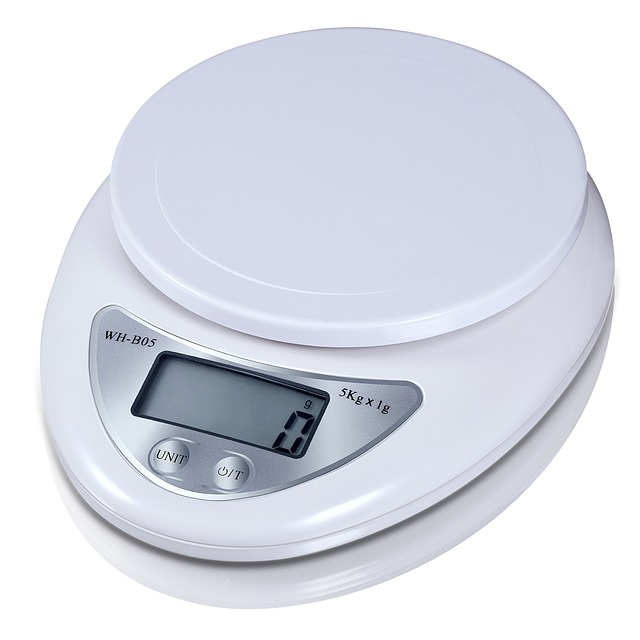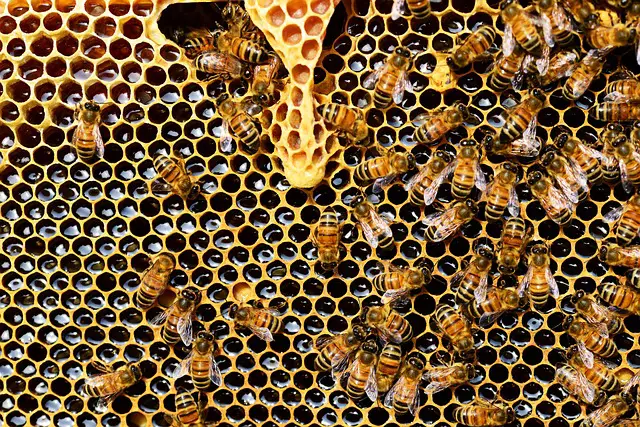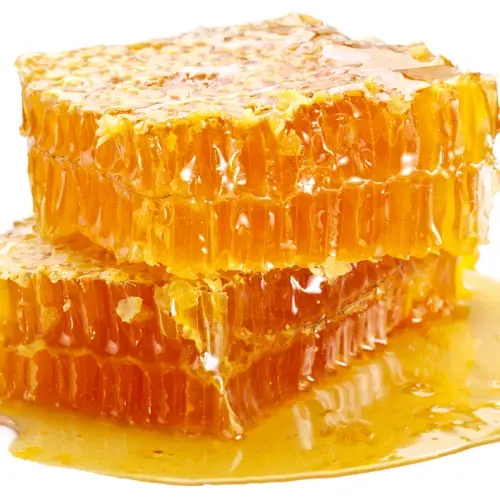
Honey is a natural product created by bees through the process of collecting and transforming nectar from flowers. This sweet, viscous liquid, typically golden or amber in color, has been cherished by humans for thousands of years for its distinctive flavor and its numerous health benefits.
Determining a precise value for the density of honey is challenging due to its inherent variability. The density of honey can be influenced by several factors, including the chemical composition of the flower nectar, the temperature at which it is stored, and its moisture content, among others.
In this article, we will present a table with various approximate values for honey's density and guide you on how to determine the density of a specific honey sample.
Density table of different types of honey
Here is a table with different types of honey and their average density. These values are approximate and may vary slightly depending on the region and production conditions:
|
Type of Honey |
Average Density (g/ml) |
|
Acacia honey |
1.40 - 1.45 |
|
Manuka honey |
1.35 - 1.40 |
|
Lavender Honey |
1.37 - 1.42 |
|
Eucalyptus honey |
1.42 - 1.47 |
|
Rosemary Honey |
1.35 - 1.40 |
|
Orange Blossom Honey |
1.39 - 1.44 |
|
Chestnut Honey |
1.43 - 1.48 |
|
Sunflower Honey |
1.37 - 1.42 |
|
Linden honey |
1.38 - 1.43 |
|
Miel Multifloral |
1.38 - 1.43 |
What is density and why is it important?
 Density is a physical property of matter that refers to the amount of mass contained in a specific volume. It is calculated by dividing the mass of an object or substance by its volume. In the case of honey, this means how much mass of honey is contained in a unit of volume, usually expressed in grams per milliliter (g/ml).
Density is a physical property of matter that refers to the amount of mass contained in a specific volume. It is calculated by dividing the mass of an object or substance by its volume. In the case of honey, this means how much mass of honey is contained in a unit of volume, usually expressed in grams per milliliter (g/ml).
Density is an important property in food science and beekeeping as it can provide valuable information about the quality and authenticity of honey.
A high-quality honey usually has a specific density and is known to be a reliable indicator of its nutritional content and purity.
Honey density: variations and key factors
The density of honey can vary significantly due to several factors, including the chemical composition of the honey, temperature and humidity.
These factors interact in complex ways to determine the density of a particular batch of honey.
Chemical composition
Honey is a complex mixture of sugars, water, minerals, acids and other compounds. The predominant sugars in honey are glucose and fructose, but it also contains small amounts of other sugars, such as sucrose and maltose.
The relative concentration of these sugars affects the density of honey, as glucose and fructose have slightly different densities.
Temperature
Temperature is a critical factor in understanding honey density. At lower temperatures, honey tends to become denser, as the sugars tend to crystallize and clump together, decreasing the amount of water in the mixture. On the other hand, at higher temperatures, honey tends to become less dense, as the sugars dissolve in water more easily.
Humidity
The amount of water present in honey also influences its density. Honey with a lower water content will be denser than honey with a higher water content. Most natural honeys have a water content ranging from 17% to 20%.
Botanical variation
The type of flower from which bees collect nectar influences the density and flavour of the honey. Honeys from different botanical varieties may have slightly different densities due to differences in the chemical composition of the nectar.
How to calculate the density of honey?
The density of honey can be calculated using a fairly simple formula:
 Density = Mass of honey (g) / Volume of honey (ml)
Density = Mass of honey (g) / Volume of honey (ml)
Steps to perform this calculation at home:
-
Weighing the honey: First, you need to weigh the amount of honey you want to measure. This is done using a suitable scale that can measure in grams (g).
-
Measuring the volume of honey: Next, you need to measure the volume of the honey. This is usually done in milliliters (ml) using a graduated cylinder or other volume measuring instrument.
-
Apply the formula: Once you have the mass in grams and the volume in milliliters, simply divide the mass by the volume to get the density in grams per milliliter (g/ml).
The result will give you the density of the honey in terms of grams per milliliter. This value can vary depending on the temperature, so it is important to take the measurement at a standard temperature if you want to compare it with reference values.
It is also important to note that the density of honey can change over time due to crystallization and other natural processes. Therefore, if you are making accurate measurements for scientific or quality control purposes, it is important to maintain consistent conditions and take measurements at the right time.
Density measurement in a laboratory
At an industrial level, the density of honey is typically measured in a laboratory using a densitometer or a refractometer. The densitometer is an instrument that is dipped into the honey, and the reading it provides depends on the buoyancy of the densitometer relative to the density of the honey.
The refractometer, on the other hand, measures the refraction of light through honey and provides a reading that is related to the concentration of sugars, which can be used to calculate density.
Why is honey density important?
Honey density is not only relevant in terms of quality control, but also has implications for its use and storage. Here are some reasons why honey density is important:
Quality and authenticity
Density is an important indicator of honey authenticity. Diluted or adulterated honeys often have lower densities due to the addition of water or other liquids.
Crystallization
Density influences the tendency of honey to crystallize. Honeys with higher densities tend to crystallize more slowly than honeys with lower densities.
Texture and viscosity
The density of honey affects its texture and viscosity. Denser honeys are thicker and stickier, while less dense honeys tend to be more liquid.
Culinary use
The density of honey can influence its use in cooking. Denser honeys may be preferred for certain culinary preparations due to their texture and flavor.
Honey production process
 The honey production process begins when bees collect nectar from flowers using their tubular tongue called a "proboscis."
The honey production process begins when bees collect nectar from flowers using their tubular tongue called a "proboscis."
The bees then store the nectar in their honey sacs, where it is mixed with enzymes produced by the bees and its water content is reduced. The bees then regurgitate the partially digested nectar into the honeycomb cells inside the hive.
Finally, the nectar is further dehydrated by ventilation by the bees until it becomes honey. During this process, enzymes and water evaporation contribute to the chemical transformation of the nectar into honey.
Composition of honey
The composition of honey is very complex and can vary depending on the nectar source used by the bees to produce it.
However, honey typically contains natural sugars such as glucose and fructose, as well as small amounts of other sugars such as sucrose and maltose.
In addition to sugars, honey contains minerals, vitamins, antioxidants and organic compounds, making it more than just a sweetener.
Obtaining process
 The honey production process begins with bees collecting nectar from flowers. This nectar is stored in a special organ called the "honey crop," where it is mixed with enzymes that transform its sugars. Upon returning to the hive, the bees pass the nectar from mouth to mouth among the worker bees, continuing the enzymatic process.
The honey production process begins with bees collecting nectar from flowers. This nectar is stored in a special organ called the "honey crop," where it is mixed with enzymes that transform its sugars. Upon returning to the hive, the bees pass the nectar from mouth to mouth among the worker bees, continuing the enzymatic process.
Once the nectar has been sufficiently processed, it is deposited into the cells of the honeycomb. Here, the bees flap their wings to ventilate the hive, helping to evaporate excess water from the nectar and convert it into honey. When the honey reaches a suitable water concentration (less than 20%), the bees seal the cells with wax, protecting the honey.
The beekeeper extracts the mature honeycombs and removes the layer of wax covering the cells. The honeycombs are then placed in a centrifuge (honey extractor) which, by rotating, forces the honey out of the cells. The honey is filtered to remove traces of wax and impurities, and finally it is packaged for sale.